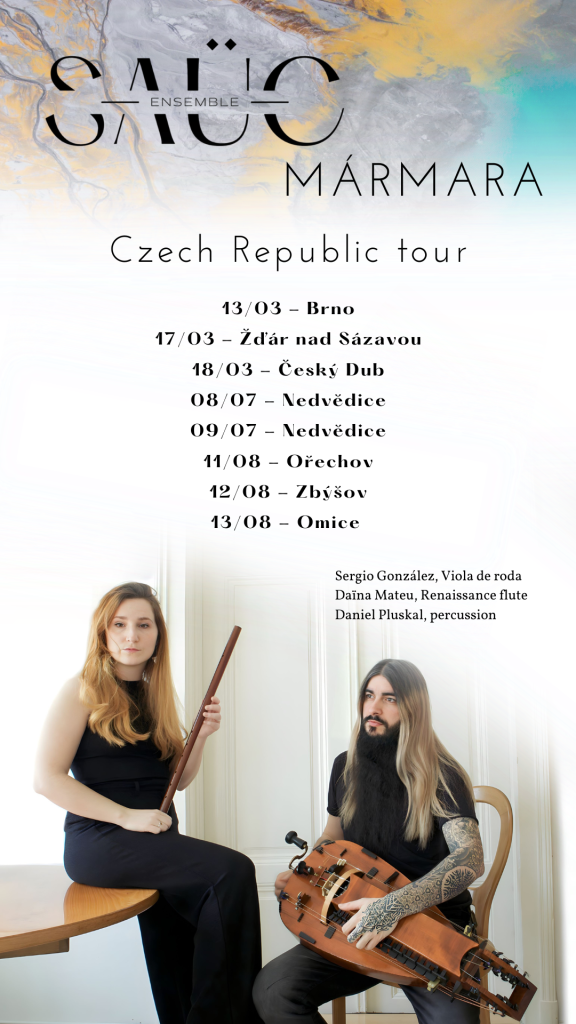Mármara Concert Program
La Tricotea, San Martín la vea
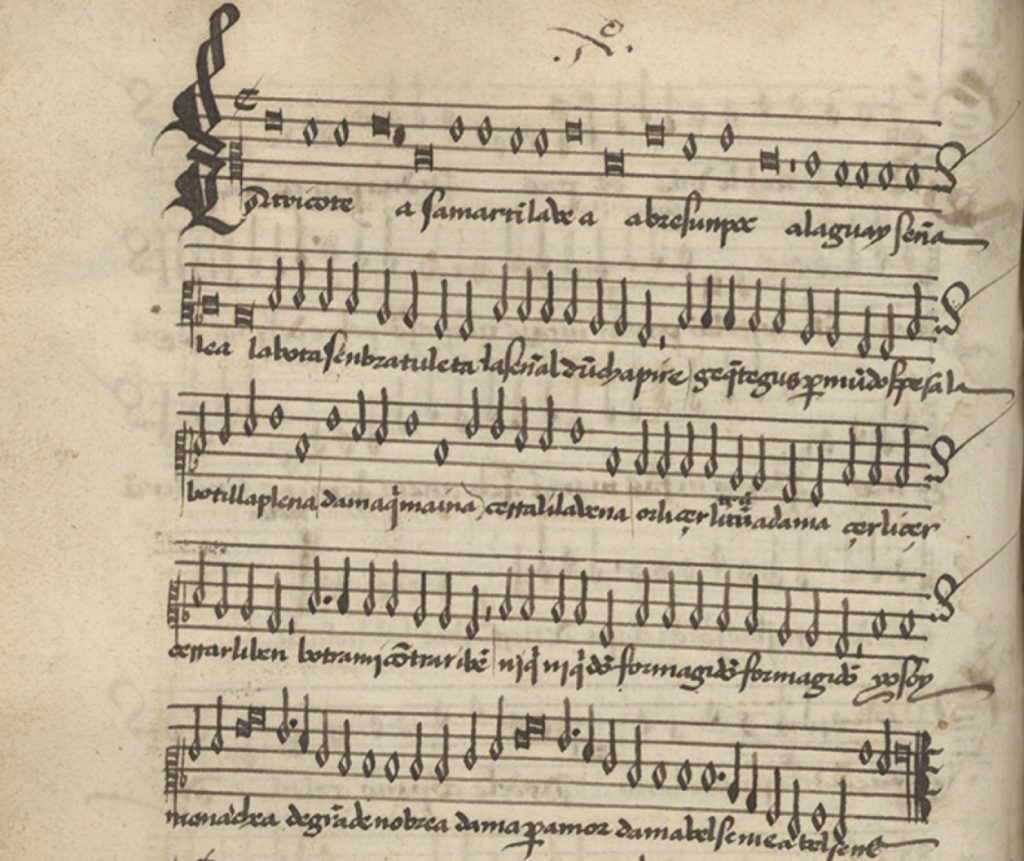
This piece is featured in the manuscript Cancionero de Palacio (1490-1520) and attributed to Franco Alonso. The song is the Spanish adaptation of a French song already documented in the early 15th century.
The text of the song is partially unintelligible, due to the use of invented italian and invented french, It’s a Satirical song that was probably sung in taverns and among soldiers of the time.
Lyrics
La tricotea,
San Martin la vea.
Abres un poc
al agua y señalea.
La bota sembra tuleta,
la señal d’un chapiré.
Ge que te gus per mundo spesa,
La botilla plena,
Dama qui mayna,
cerrali la vena,
Orli, çerli, trum, madama,
Çerli, çer, cerrarli ben,
votr’ami contrari ben.
Niqui, niqui, don
formagidón, formagidón.
Yo soy monarchea
de grande nobrea.
Dama por amor,
dama bel se mea,
dama yo la vea.
Κρυφά για σένα θα πονώ, Krifa gia sena tha pono – Trad Greek
“Krifa gia sena tha pono” is a traditional Greek song that is anonymous in terms of its composer. The title translates to “Secretly I will suffer for you.” The song is a Syrto, a popular dance in Greece, characterized by the dancers linking hands to form a chain or circle, headed by a leader who intermittently breaks away to perform improvised steps.
The lyrics of the song express feelings of love and longing, with the narrator confessing their hidden suffering for the object of their affection. The song has been performed by various artists and remains a popular tune in Greek traditional music.
Lyrics & Translation
Krifa ya sena tha pono
ke fanera tha liono
ki anthropos de tha fandasti pos eho agapis pono
Pono ho ke ton pono mu de leo se kanena
krifa maresi na pono
afu pono ya sena
(English)
Secretly ill suffer for you
and evidently i’ll melt
and nobody will ever imagine that i suffer from the pain of love
I suffer and the pain
i dont tell it to anybody secretly i like to suffer since the pain is for you
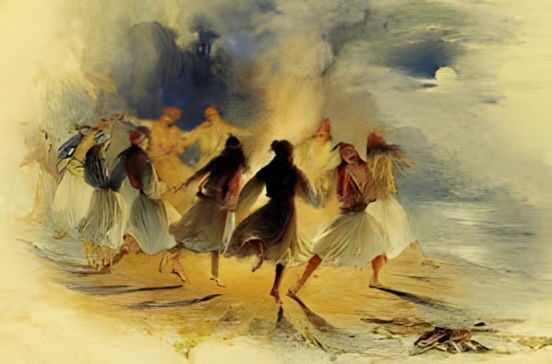
Si abrá en este baldrés
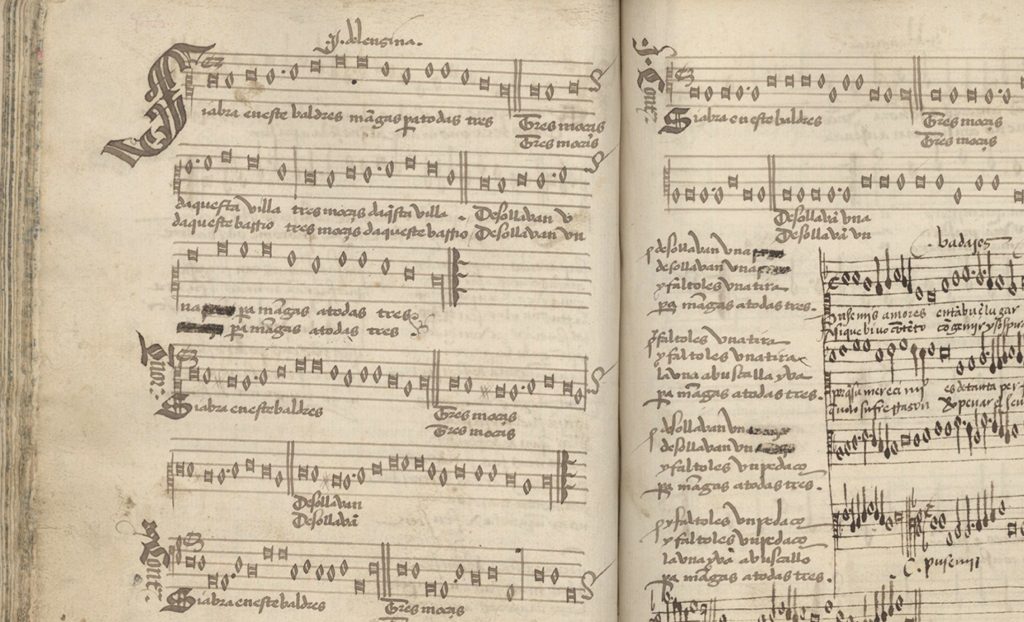
Found in Cancionero de Palacio (1490-1520) and written by the Juan del Encina (1468 – 1529)
“Si abrá en este baldres” is a humorous Renaissance song that tells the story of three women who are searching for soft leather to make sleeves. However, they start to imagine other uses for the leather, including making sex toys or dildos. The lyrics are full of innuendos and double entendres that play on the idea of the soft leather being used for sexual purposes.
As you can see in the picture in the left, the words for “dick” were later crossed and scrapped out of the text by some later and probably more religious coppist, censorship in the 15th century.
Lyrics & Translation
¡Si abrá en este baldrés
mangas para todas tres!
Tres moças d’aquesta villa
desollaban una pija
para mangas a todas tres.
Tres moças d’aqueste barrio
desollaban un carajo
para mangas a todas tres.
Desollaban una pija
y faltóles una tira,
la una a buscalla yva
para mangas a todas tres.
Desollaban un carajo
y faltóles un pedaço
la una yva a buscallo
para mangas a todas tres.
(English)
Will this soft leather contain
Sleeves (dick) enough for three?
Three girls from this town,
Three girls from this town
Were fleecing a dick,
To have slevees (dick) enough for all three.
And they missed a piece,
And they missed a piece.
One went to get it
To have slevees (dick) for all three.
Three girls from this neighborhood,
Three girls from this neighborhood
Were fleecing a cock,
To have spouts enough for all three.
Encúbrase el mal que siento
“Encúbrase el mal que siento” is a Renaissance piece of polyphonic music composed by Mateo Flecha the Elder (1481-1553) and found in the not so well known “Cançoner de Barcelona”.
The title translates to “Cover up the pain I feel” and the piece features a complex beautiful syncopation between the voices. As with many Renaissance compositions, the text of the song is in Spanish and features poetic language and imagery. The piece showcases the intricate and sophisticated polyphonic style of the Renaissance period and is considered a notable example of Flecha’s work.
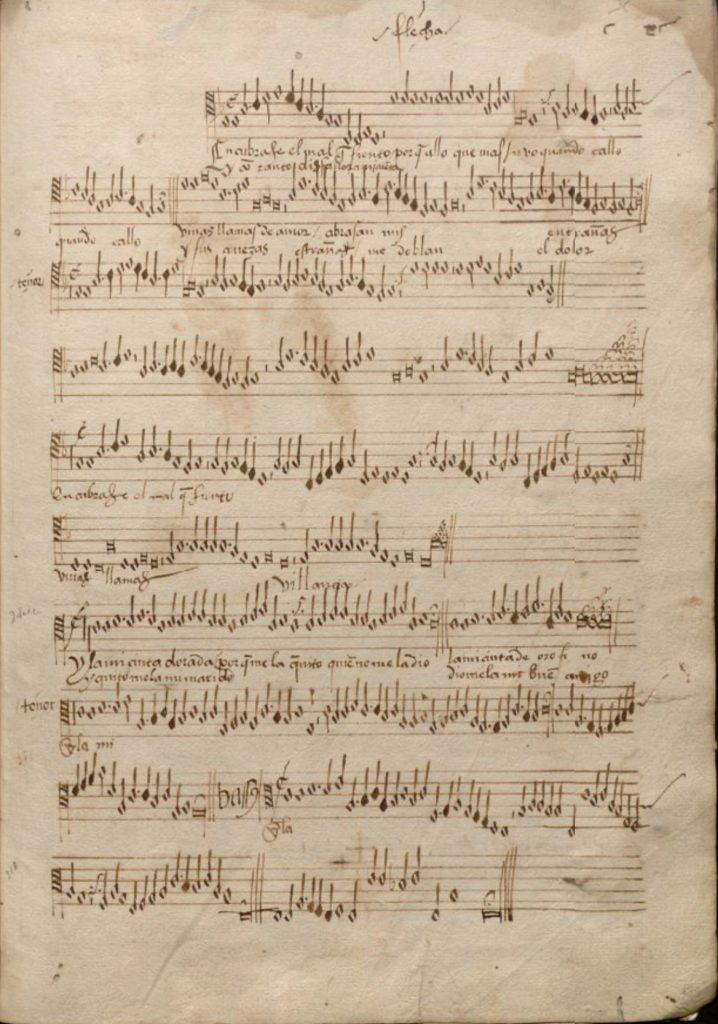
Tekez – Traditional Turkish
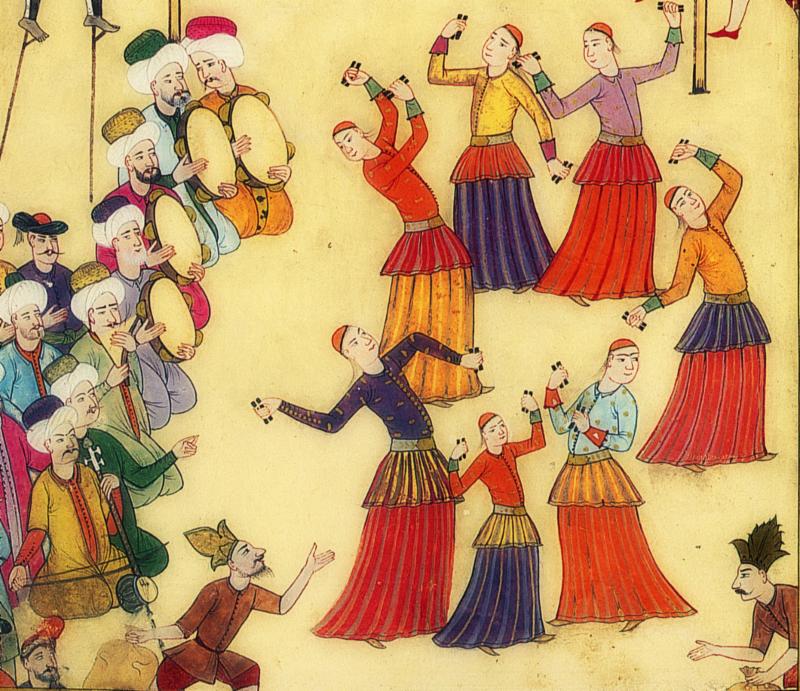
Tekez is a traditional turkish song, in 9/8 time signature, popularized by the great Ross Daly (cretan musician) in his album Kin Kin.
We don’t know much about the origin of this traditional turkish piece, it’s said it could be traced to the area of adana, in the south of turkey but at this day the origin remains unknown
Nevesser Nefes
Neveser Nefes or Alem Yüzüne Saldı Ziya is a Turkish Ilahi, Ilahi is a type of religious hymn sung in a group, often outside a mosque
“Alem yüzüne saldı ziya al-i Muhammed
Seyfin çak edip geldi yine al-i Muhammed
Nadan ne bilir dana bilir al-i Muhammed
Ve salli ala seyyidina al-i Muhammed
Sad salli ala mürşidina şah-ı velayet.“
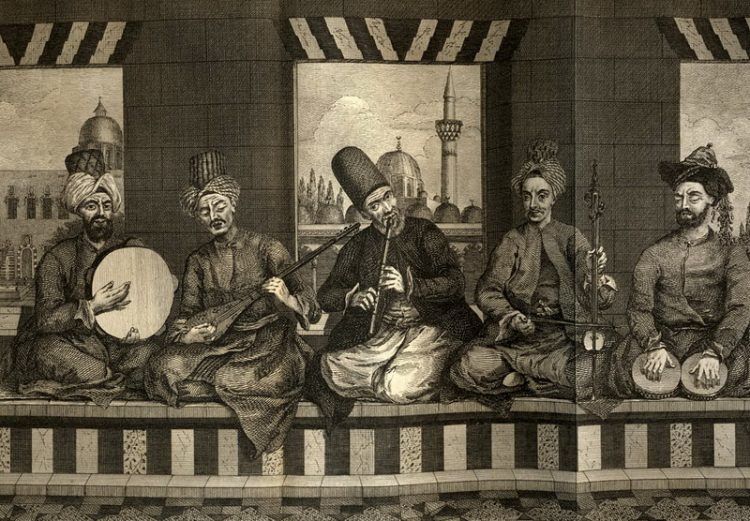
Ay triste que vengo
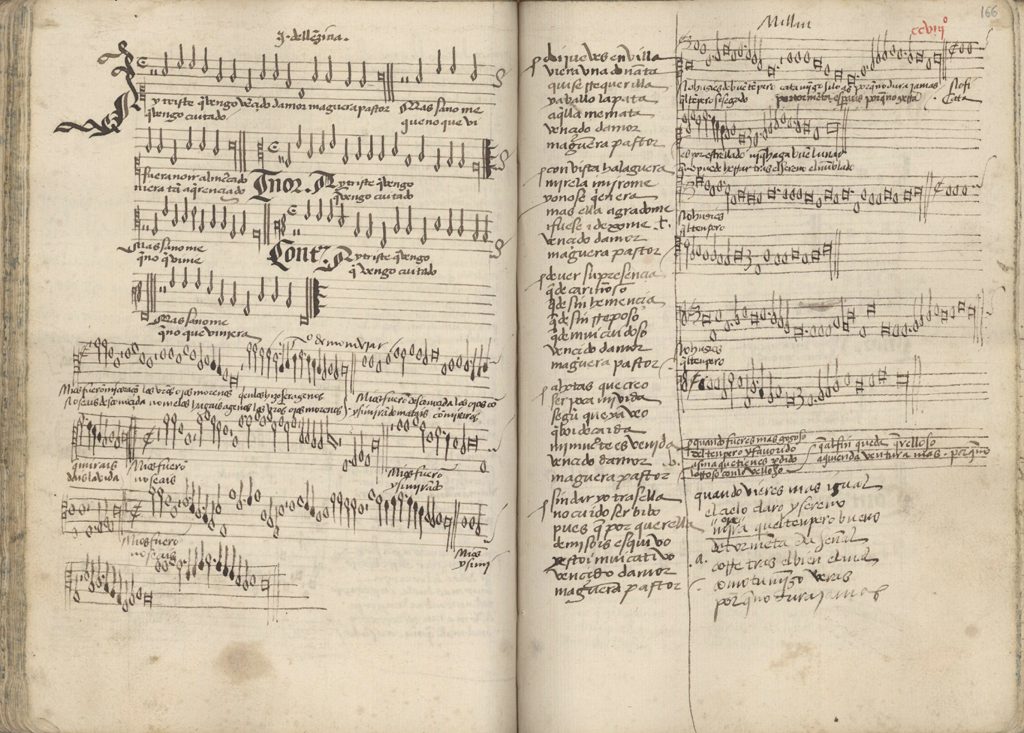
“Ay triste que vengo” translates to I come very sad, this piece is also found in the manuscript Cancionero de Palacio (1490-1520) and was written by the composer
Juan del Encina (1468 – 1529)
This is the story of how the narrator went to the market and fell in love, a love that sadly wasn’t corresponded because he was a shepperd.
Lyrics
Ay, triste, que vengo
vencido d’amor
magüera pastor.
Más sano me fuera
no ir al mercado
que no que viniera
tan aquerenciado:
que vengo, cuitado,
vencido d’amor
magüera pastor.
Con vista halaguera
miréla y miróme.
Yo no sé quién era
mas ella agradóme;
y fuese y dexóme
vencido d’amor
magüera pastor.
Mandilatos Haris / Sandansko Horo
Mandilatos is a traditional dance in 7/8 from Greece, particularly from the region of Epirus. The dance is usually performed by men in weddings and is characterized by fast, rhythmic movements and footwork. The dancers wear traditional costumes, which often include a scarf or handkerchief tied around the head.
Sandansko Horo is a popular folk dance in 22/8 from the Pirin region of southwestern Bulgaria. It is named after the town of Sandanski, which is known for its hot mineral springs and natural beauty. The dance is typically performed in a circle, with dancers holding hands and moving in a counterclockwise direction.
The very intrincate and complicated rythms of this set of pieces really makes them very interesting to play.
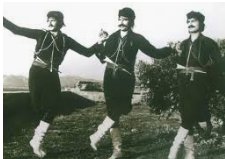
Fata la parte
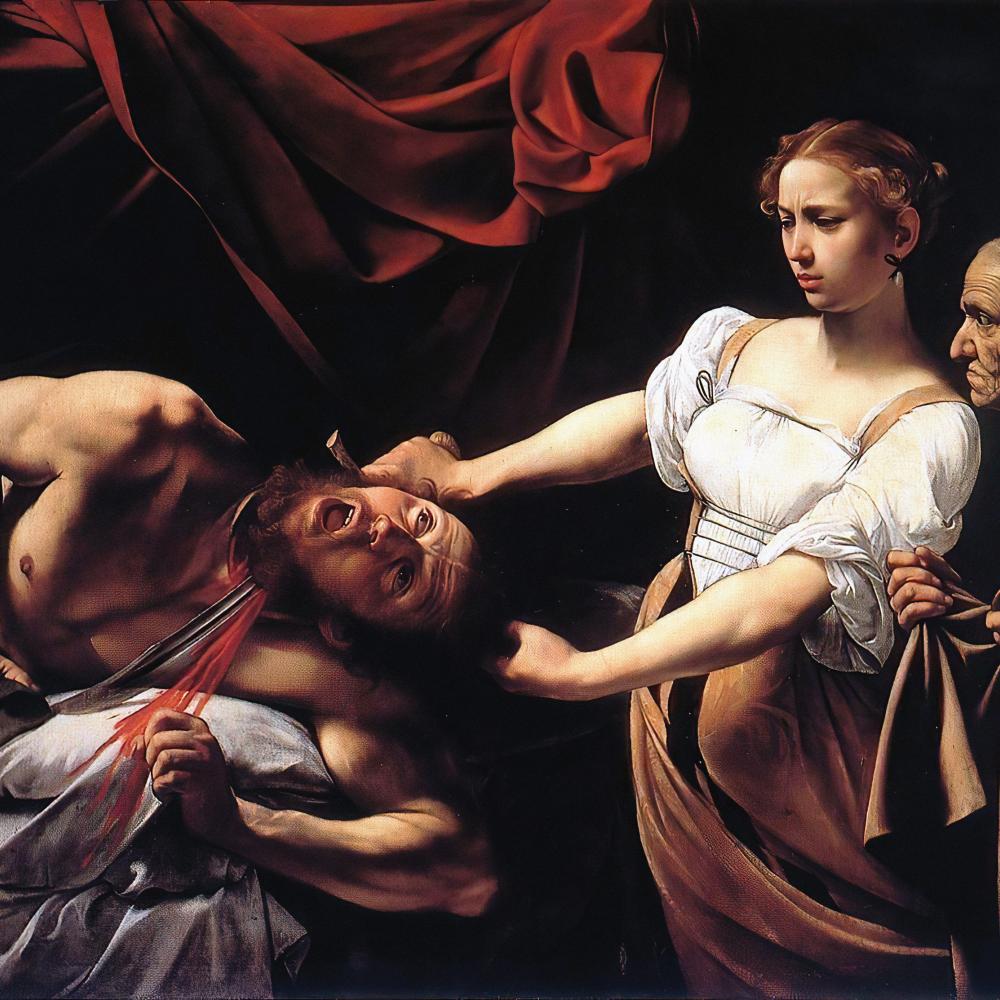
Another joyful piece by Juan del Encina (1468 – 1529) discovered by Barbieri in his studies of Cancionero musical de palacio.
In the Villancico, a messenger announces the tragic news that Micer Cotal has caught his wife and her Spanish lover in the act. He kills her, and the lover escapes “by force and by art.” The vengeful Cotal is left frustrated and angry, vowing to capture the Spanish lover and subject him to torture and suffering. In the end, a friend tries to console him, saying that it was a shame that the lover cuckolded him.
Interestingly, the name “Micer Cotal” is actually a double meaning, referring to the rival Italian composer Bartolomeo Tromboncino, who was rumored to have killed his own wife, Juan del encina was mocking him with this composition, renaissance beef.
Lyrics
Fata la parte
tutt’ ogni cal,
qu’ es morta la muller
de miçer Cotal.
Porque l’ hai trovato
con un españolo
en su casa solo,
luego l’ hai maçato.
Lui se l’ ha escapato
por forsa y por arte.
Fata la parte
tutt’ ogni cal,
qu’ es morta la muller
de miçer Cotal.
Restava diciendo,
porque l’ hovo visto,
¡o válasme Cristo!,
el dedo mordiendo,
gridando y piangendo:
– ¡Españoleto, guarte!
Fata la parte
tutt’ ogni cal,
qu’ es morta la muller
de miçer Cotal.
¡Guarda si te pillo,
don españoleto!
Supra del mi leto
te faró un martillo,
tal que en escrevillo
piangeran le carte.
Fata la parte
tutt’ ogni cal,
qu’ es morta la muller
de miçer Cotal.
Hoy comamos y bebamos
“Hoy comamos y bebamos” is a Spanish phrase that translates to “today we eat and drink.” The phrase is often used as an expression of enjoyment and celebration, and it is commonly associated with feasting and festivities.
In some contexts, the phrase may also be used to emphasize the importance of living in the present moment and enjoying life’s simple pleasures. It can be seen as a reminder to savor life’s experiences and make the most of every opportunity to connect with others, indulge in good food and drink, and celebrate the joys of life.
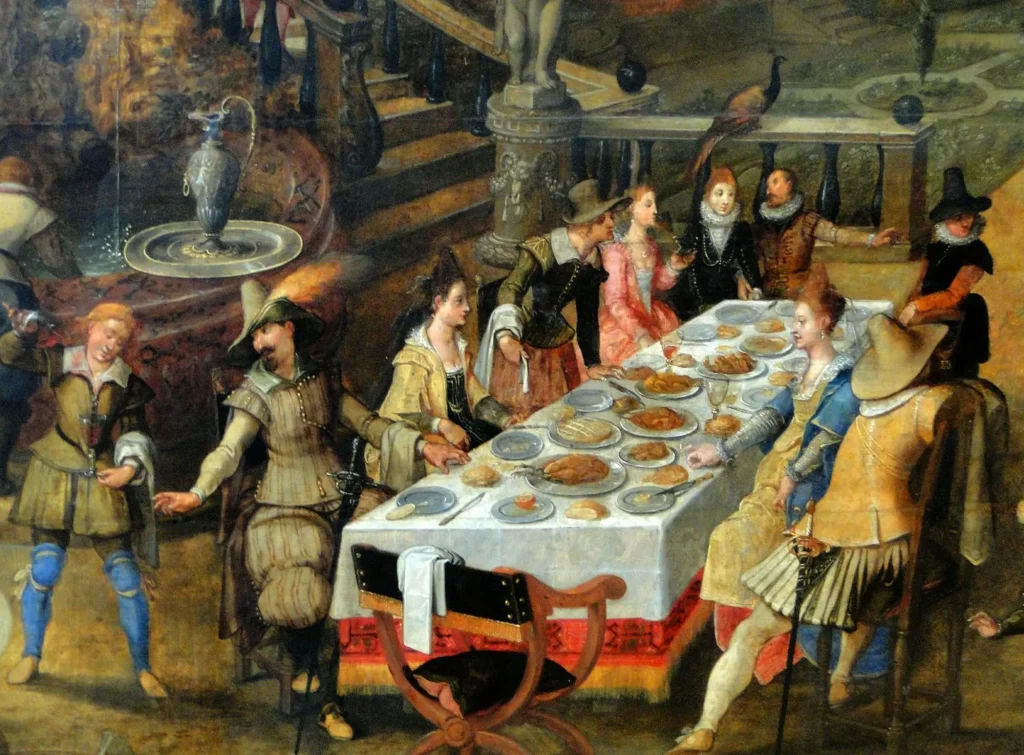
Rodrigo Martinez

This Folía comes from the “Cancionero Musical de Palacio,” a Renaissance songbook that we have been researching for some time to revive his lost music.
The piece is satirical and talks about a peasant (probably with some mental retardation) who confuses “ansares” (ducks) with his cows, whistles to them and tries to take them to graze in the field instead of taking them to the river.
Although it may seem like Renaissance bullying, a certain affection towards Rodrigo Martinez is hinted at in a certain part of the lyrics, so we personally think that this burlesque lyric comes from love. “so handsome” “so dashing”
Mandilatos Hicaz
This is another mandilatos, traditional dance from Greece in the time signature of 7/8, traditionally danced in weddings, in this case our mandilatos was composed in Makam Hicaz, which gives it a very interesting middle-eastern flavour
Aksak is a rhythmic system in Ottoman musical theory, where fast-paced pieces or sequences are based on a matrix formed by the combination of rhythmic cells alternating between binary and ternary quantities (such as 2+3, 2+2+3, 2+3+3, etc.). This system, which means “limping”, “stumbling”, or “slumping” in literal terms, involves uninterrupted reiteration of the matrix. The term “aksak” has been adopted by Western ethnomusicologists to describe irregular or additive meters.
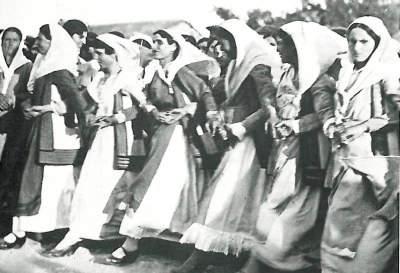
Kelil Kopanitsa
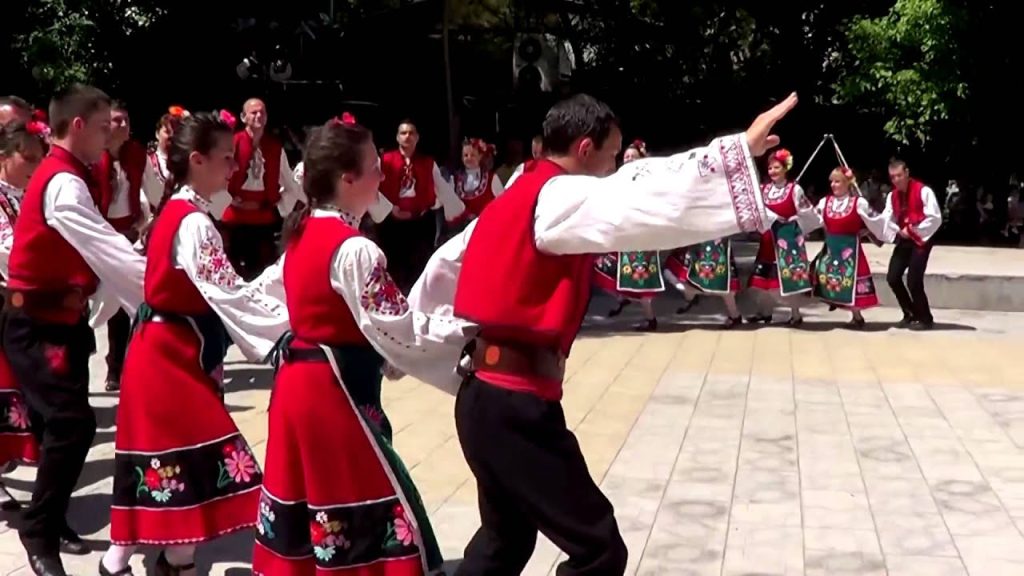
This is the only piece of todays program that doesn’t come from a historical or traditional source
It’s a composition by our Viola de Roda player Sergio González in a traditional dance form from bulgaria called Kopanitsa, again it’s in an Aksak rhythm, in this time 11/8
